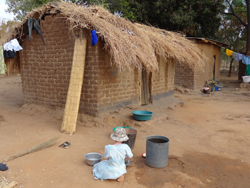In Africa people with albinism are visibly different from their black peers. The lack of pigment in their hair, skin and eyes makes them highly susceptible to sun-induced skin damage. They are visually impaired but usually attend mainstream schools in Malawi. The superstitions and myths surrounding the condition often lead to rejection and ostracism by the community. The international non-government organisation - Sightsavers and an advocacy group, TAAM, offer support to this vulnerable group.
This study is based on an earlier scoping study into the education of children with visual impairment carried out by University of Birmingham for Sightsavers in 2008. Evidence from this study revealed that children with albinism were receiving different levels of education at resource centres and mainstream schools, mainly because of the insufficient training of class teachers and a lack of accurate information about the condition.
 Furthermore, it was found that many children attending specialist resource centres had not been formally assessed by an eye specialist, mainly because there are very few qualified optometrists in Malawi. Children with albinism were being accepted into resource centres partly because of a commonly held, though mistaken, belief that they would go blind in later years. It was therefore considered necessary to teach these children Braille in the erroneous assumption that they would need it in the future, when they lost their vision. Albinism, however, is not a progressive condition and does not lead to blindness, making teaching Braille an inappropriate intervention and misuse of resources. There is also the danger of inappropriately committing these children and young people to a lifetime of Braille which is not widely available outside the school system.
Furthermore, it was found that many children attending specialist resource centres had not been formally assessed by an eye specialist, mainly because there are very few qualified optometrists in Malawi. Children with albinism were being accepted into resource centres partly because of a commonly held, though mistaken, belief that they would go blind in later years. It was therefore considered necessary to teach these children Braille in the erroneous assumption that they would need it in the future, when they lost their vision. Albinism, however, is not a progressive condition and does not lead to blindness, making teaching Braille an inappropriate intervention and misuse of resources. There is also the danger of inappropriately committing these children and young people to a lifetime of Braille which is not widely available outside the school system.
This research explores some of the ways teachers can support these children through the use of inclusive education practices that can increase their participation in all school activities and enhance the quality of their learning experiences.
Aims and Methodology
The main research aim was to explore albinism directly by capturing the experiences of children and young people and their families, and indirectly through those involved in their education, notably the itinerant teachers who support children with visual impairment in mainstream schools.
Field research, conducted over two visits to Malawi in September 2010 and September 2011, was designed to capture different perspectives. Multiple participatory methodologies, including focus group discussions, drawing activities and semi-structured interviews were adopted. Interviews also collected demographic and school data.
The current study builds on previous research in Malawi and aims to identify the key determinants preventing young people with albinism from accessing education in five rural villages in northern Malawi. Community Community beliefs about albinism will be documented as these must be taken into consideration when adapting educational policy for this vulnerable group.
Research questions will be influenced by participants’ identifying areas they
consider important and will include:
1. What is the local communities’ understanding of albinism?
2. How does economic necessity or poverty affect the education of children with
albinism?
3. What solutions and strategies could lead to greater access to appropriate
education at their local school?
Dr Pat Lund from the University of Coventry is leading this research in collaboration with
Dr Paul Lynch, an expert in the education of visually impaired children at the School of Education, Birmingham.